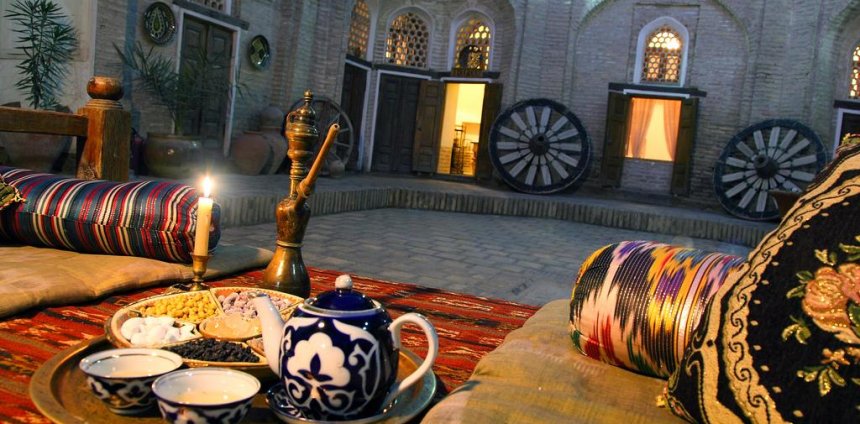Tea Traditions in Uzbekistan: More Than a Drink

In Uzbekistan, tea is more than just a drink — it’s a fundamental part of daily life. It's present at the beginning and end of every meal, central to family conversations, important agreements, and gestures of hospitality.
The Heart of Uzbek Hospitality
Green tea (kuk choy) is the most widely consumed in Uzbekistan, especially outside the capital. In Tashkent, however, black tea (qora choy) is more popular. Across all regions, traditional chaykhanas (tea houses) continue to be social hubs where men chat, play games, cook plov, and share stories.
For Uzbeks, shirchoy (tea with milk) is considered a dish in itself, typically served for breakfast. Unlike other cultures, tea is usually consumed without sugar — though it’s common to add aromatic herbs or spices like mint or star anise.
Why Do Uzbeks Drink Hot Tea Even in Summer?
Here’s a cultural curiosity: Uzbeks drink hot tea even during the summer. It's not just tradition — it has a physiological explanation. Cold drinks don’t quench thirst for long, while hot tea encourages sweating, which cools the body and helps prevent overheating in extreme climates.
“Drinking hot tea in summer isn't madness — it's desert wisdom.”
How to Brew a Good Uzbek Tea
- Rinse the teapot with boiling water to preserve the aroma.
- Add one teaspoon of leaves for every half liter of water.
- Pour a little hot water and let it steep for 2–3 minutes.
- Fill the teapot with more boiling water and cover it.
- Wrap the pot with a cloth to retain heat.
- After 5 minutes, the tea is ready to serve.
⚠️ Tip: Never boil tea directly on the stove — it loses flavor and color.
How to Serve Tea Properly to Guests
The act of serving tea is full of respect. Before offering it, the host performs the “kaytarma”: pouring the tea into a cup and returning it to the teapot three times.
Then, a small amount (1/3 of the cup) is served to the eldest guest, with a traditional gesture: the right hand over the heart and a slight bow while saying “oling” (“please accept”).
Usually, the youngest daughter-in-law or the youngest woman present serves the tea if women are hosting. In male gatherings, the hostess passes the tea to the head of the household.
What Is Tea Served With?
Tea is commonly served with traditional sweets like parvarda, dried fruits, raisins, and apricots. It’s not just a beverage — it’s a complete sensory and cultural experience.
